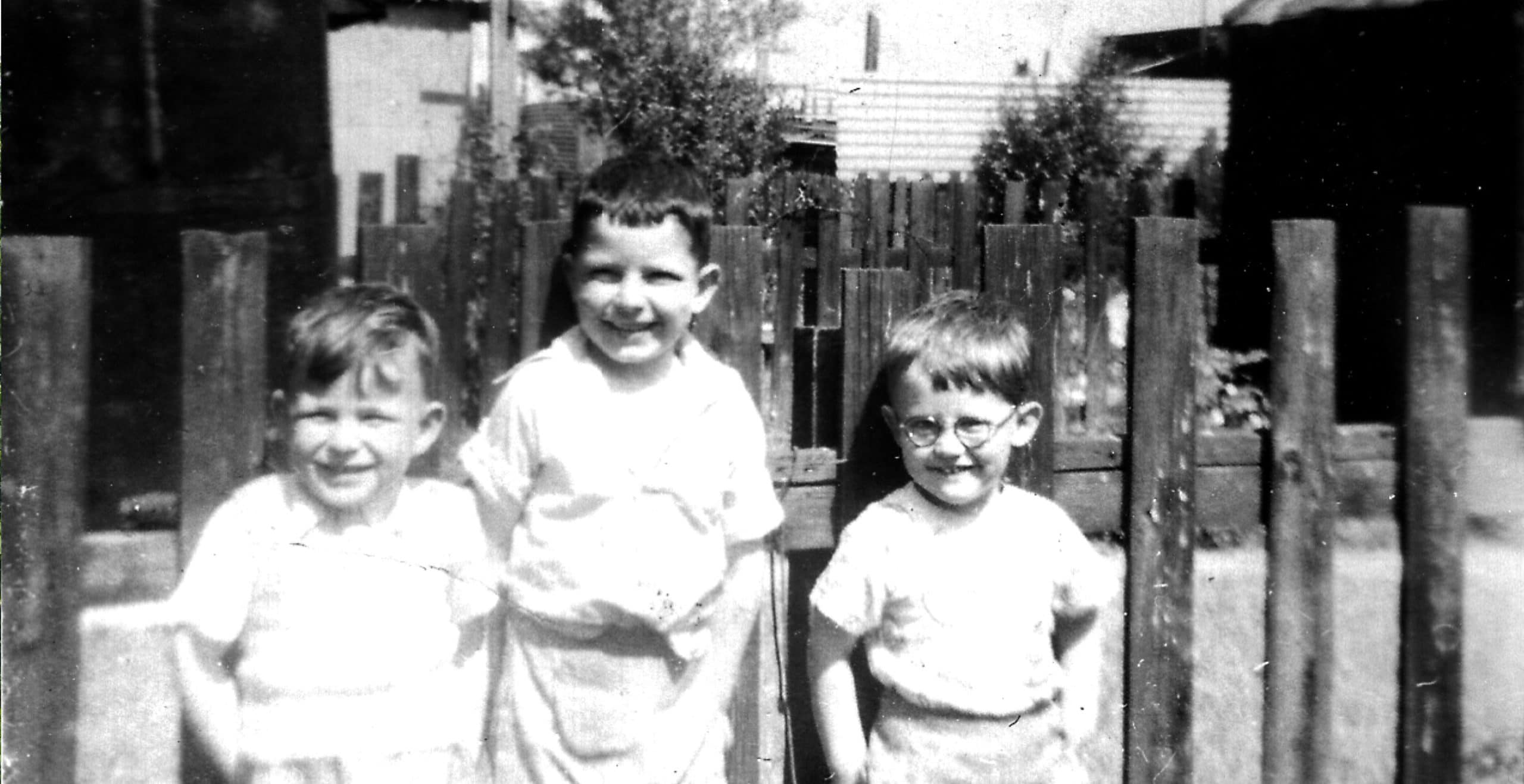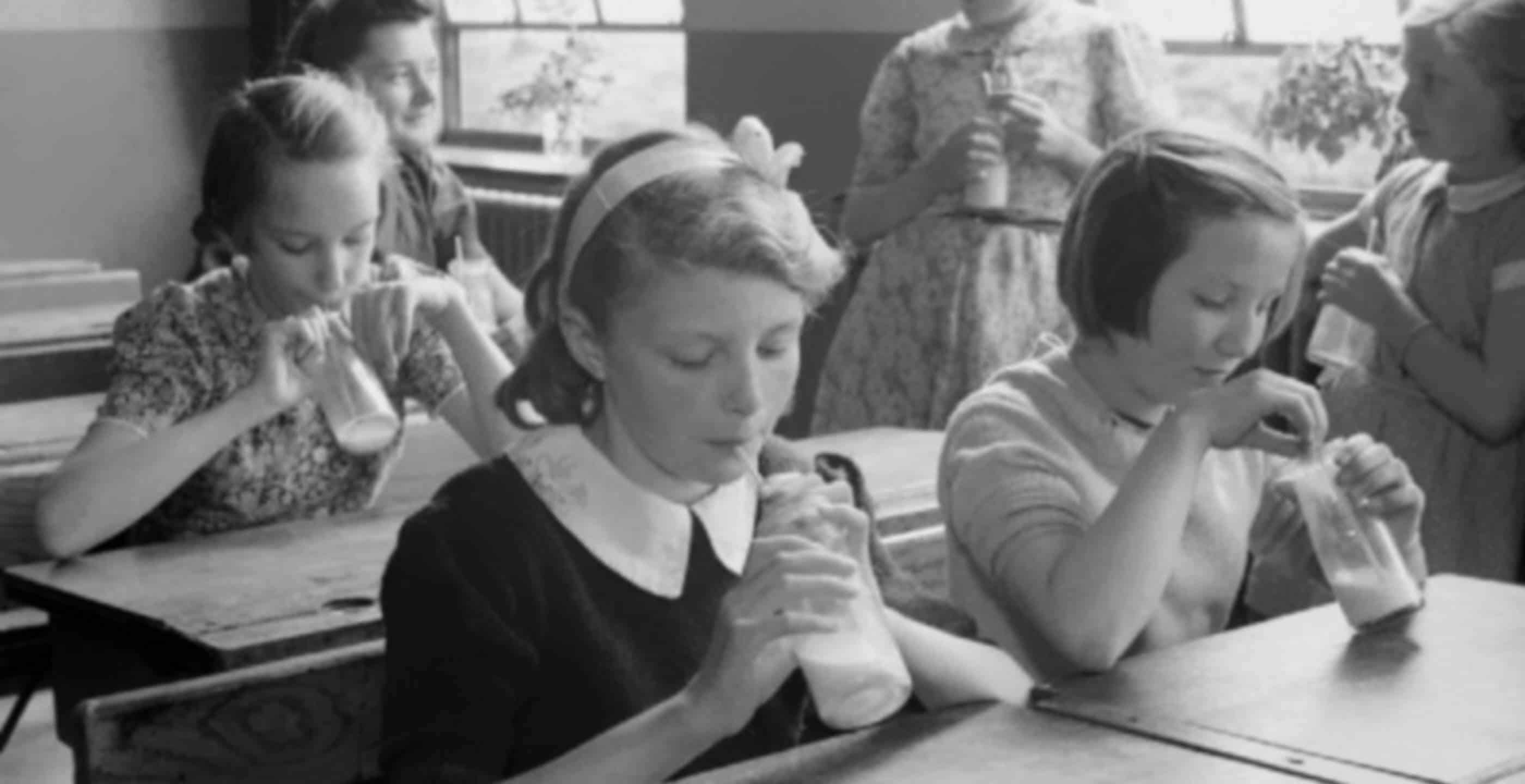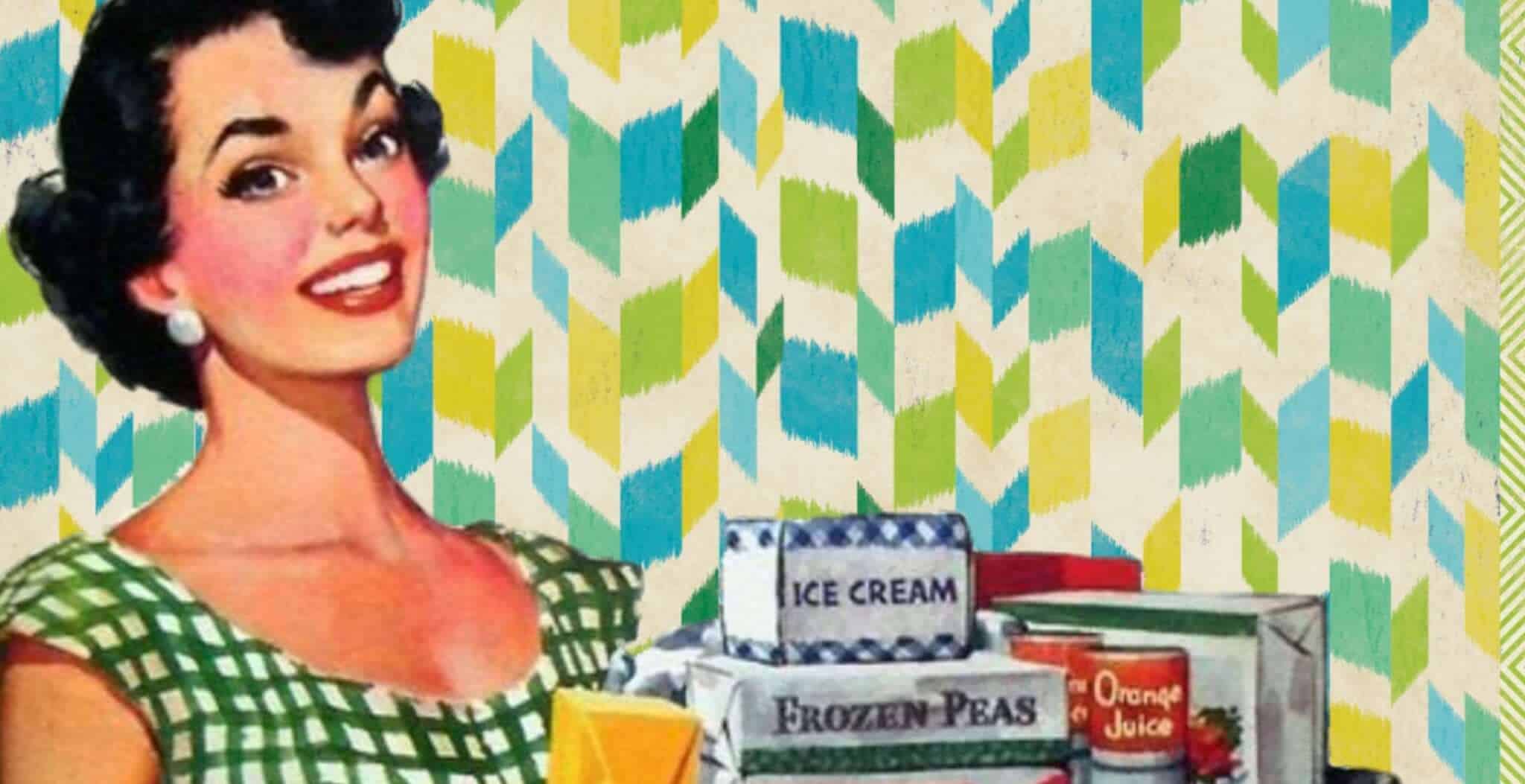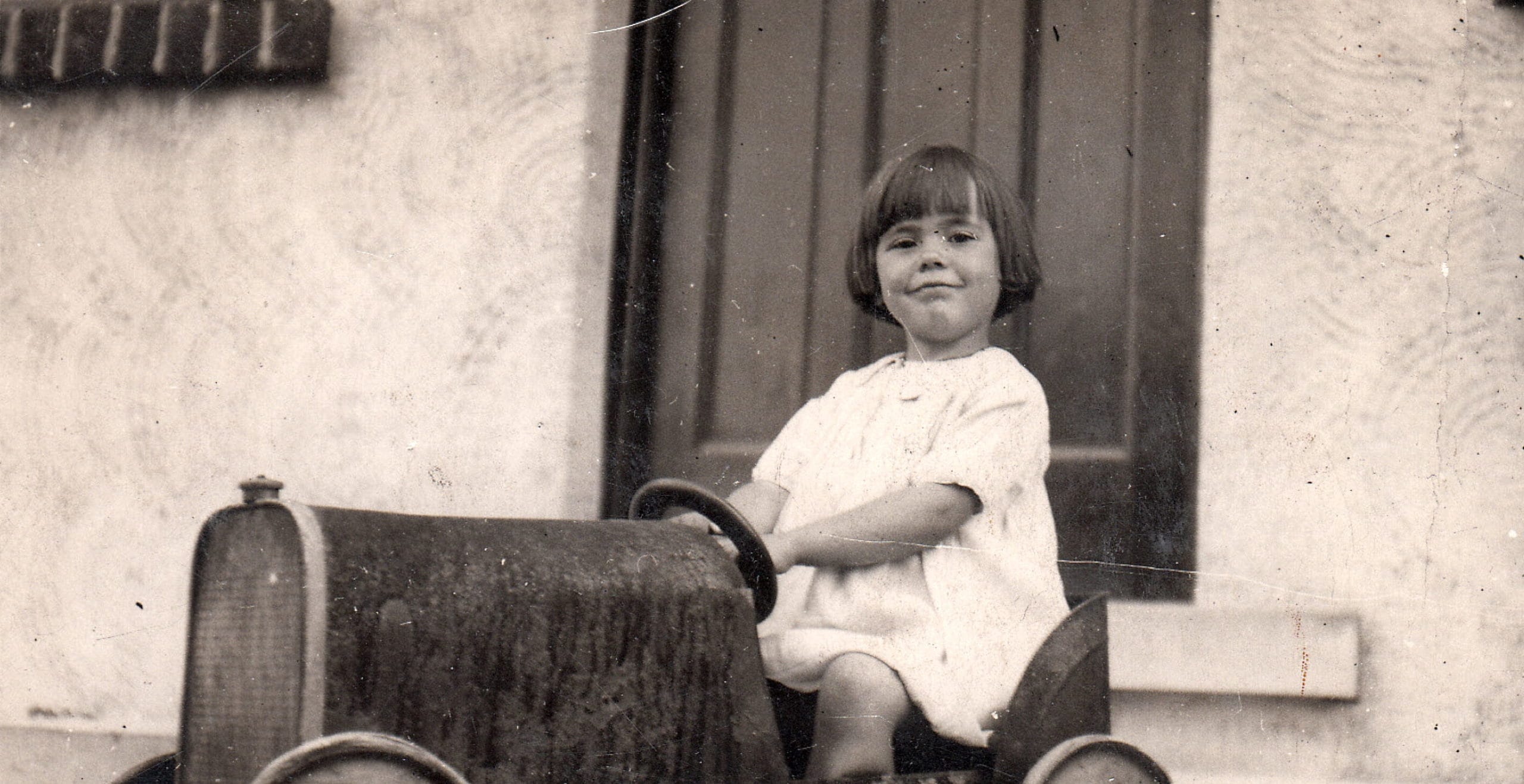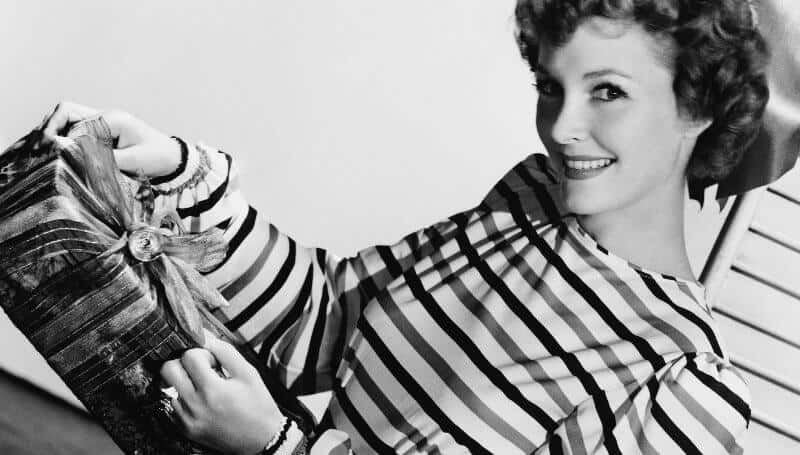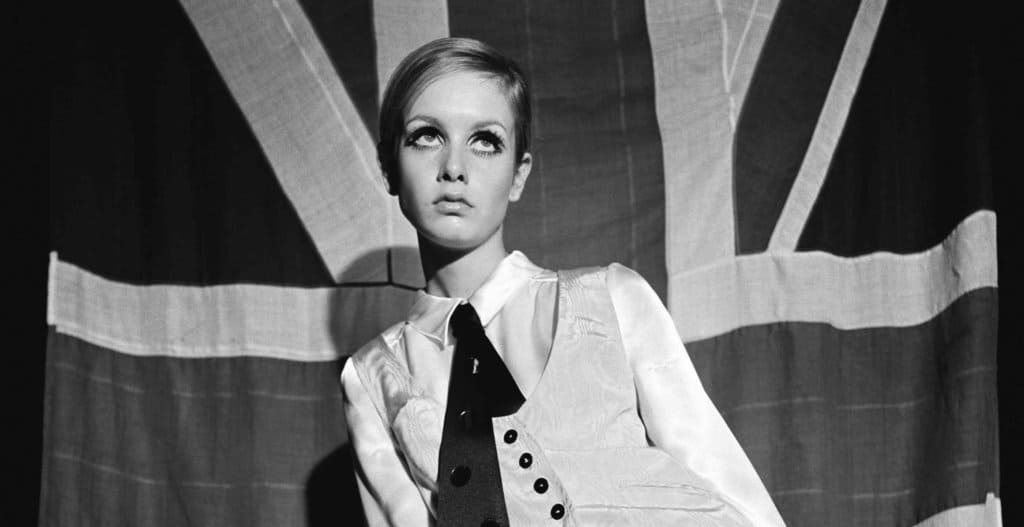The recent Covid lockdowns left our children and grandchildren somewhat isolated indoors, their play virtual on Playstations, Netflix and the like. Books, colouring and board games also helped while away the time in between home school sessions. The one trip out for exercise each day meant a walk to the park or perhaps a family bike ride.
This sad state of affairs led many of us to think back to our own childhoods and how very different they were.
In the 1950s and 1960s a child was allowed freedoms unheard of today. At weekends and during school holidays, it was quite normal for a child to go out to play after breakfast, return for a quick lunch and then not be seen again until tea time, when as often as not they would arrive home with scraped knees and torn or muddy clothes.
World War Two had left large areas of the towns and cities devastated following German bombing raids. These bomb sites had been largely cleared but still lay barren – perfect for making dens!
There were no daytime TV programmes except for sport on a Saturday afternoon so children had to make their own fun. Those with bikes would cycle for miles, heading for the countryside or if in the city, the larger parks with their mix of neat flower beds, large grassy lawns and woods with plenty of trees to climb. Afternoons were spent happily fishing with nets for sticklebacks and minnows in the local stream. Many parks had tennis courts and putting greens where you could hire the equipment for a few pence from the caretaker, often a grumpy, retired old soldier who took no nonsense from anyone.
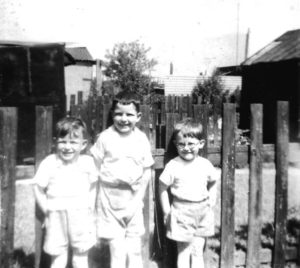
Streets were almost free of traffic in the 1950s and early 60s and so these became playgrounds for many children. Sport was very popular: in summer it was cricket and then tennis when Wimbledon was on. Football was played all year round. Girls would often choose skipping ropes and hoops, along with toy prams and dolls. Hopscotch was also played, the game drawn on the road with chalk.
Popular toys included Action Man, Sindy dolls, Meccano, Lego, train sets, Airfix kits and Etch-A-Sketch. Toy guns, bows and arrows, sling shots and water guns were popular: cowboys and Indians was a favourite game. Unbelievably, chemistry sets included all sorts of toxic and hazardous compounds, most of which are now banned.
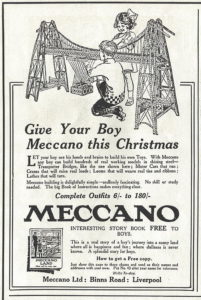
Popular children’s television shows included Watch with Mother; there was also Listen with Mother on the wireless. Other favourites included Bill and Ben The Flower Pot Men, Andy Pandy, Tales of the Riverbank, Sooty, the Adventures of Robin Hood and Crackerjack: “It’s Friday, it’s Five to Five and it’s CRACKERJACK!”. Everyone collected milk bottle tops, wool and used stamps for the various Blue Peter appeals. The safest place to watch Dr Who – and the Daleks – was from behind the sofa!
Saturday morning was the sixpenny rush at the local cinema. Inside you would find row upon row of unaccompanied children, munching on sweets, cheering on the hero in the weekly cliff hanger and laughing at the cartoons before settling down for the feature film.
As well as funding the sixpenny rush, pocket money was more often than not spent on sweets. Black Jacks and Fruit Salads (4 for a penny), sweet (candy) cigarettes, lemonade crystals and a liquorice wand, gob stoppers, dolly mixture, acid drops, flying saucers, lemon sherberts, cinder toffee and many other favourites, weighed out by the shopkeeper in 2oz or 4oz paper cones.
Pocket money was also often spent on comics: Beano, Dandy, Valiant, Hotspur, Hornet, Bunty, Eagle, Robin, Jack and Jill, to name a few. As for books, usually sourced from the local library, Enid Blyton was probably the favourite author (and most prolific!). She wrote The Famous Five and The Secret Seven books, The Toy Town Stories featuring Noddy and friends, as well as Malory Towers and St Clare’s, stories about girls’ boarding schools.
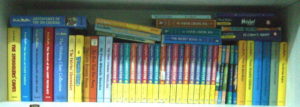 A bookshelf of Enid Blyton books. Licensed under the Creative Commons Attribution 3.0 Unported license. Attribution: Blytonite at English Wikipedia.
A bookshelf of Enid Blyton books. Licensed under the Creative Commons Attribution 3.0 Unported license. Attribution: Blytonite at English Wikipedia.
Many homes boasted an impressive set of encyclopaedias on their bookshelves for reference. No Google in those days! The Encyclopaedia Britannica, for example, consisted of around 24 beautifully bound volumes and was sold door-to-door by salesmen, often on an instalment plan as they were very expensive.
In the 1950s the nuclear family was the norm, with the father out at work and the mother busy with housework. Sunday night was bath night for everyone. Washing day was Monday. Apparently this was because factories were closed on Sundays and the air was at its cleanest on Mondays, better for drying clothes outdoors. Shopping was done daily and all meals were home cooked except perhaps for fish and chips from the chip shop on Fridays.
Snacks between meals, so popular with children nowadays, were rare. If you were lucky your mother may have baked a few cupcakes, or buns as they were known in those days, and let you have one before tea, or perhaps a jam sandwich if not. Crisps were only available in one flavour, ready salted, and were usually more of a treat than a daily snack. You could even buy broken biscuits for the biscuit tin!
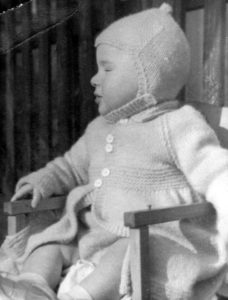
Shoes and clothing were expensive. If you were a younger sibling, clothes were often handed down, especially school uniform. Dresses, skirts, jumpers etc. were often handmade or knitted – even swimming costumes! There were no ‘labels’ as such so there was no peer pressure to have the best trainers etc. In fact everybody’s school pumps came from Woolworths!
It is amazing how, looking back down the years, the long school summer holidays always seemed to be warm, dry and sunny. With the British weather, this has to be unlikely, but perhaps as children played out of doors most days, that is how it seemed.
Today the bomb sites have been redeveloped, our streets are crammed with traffic, and unaccompanied trips to the park to play are not the norm. Unfortunately it seems nowadays, especially since Covid, that childhood has moved more indoors, with mobile phones, video games, movies on demand, tablets and home computers to entertain. The innocence and freedom of a 1950s/ 1960s childhood appears to have gone forever.
Published: 17th August 2021.
